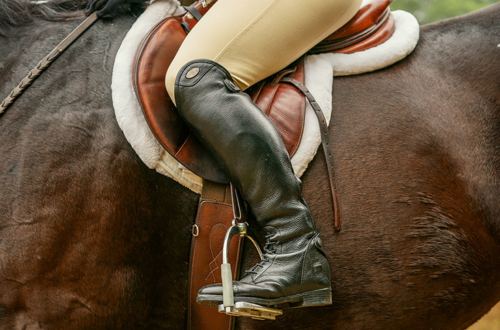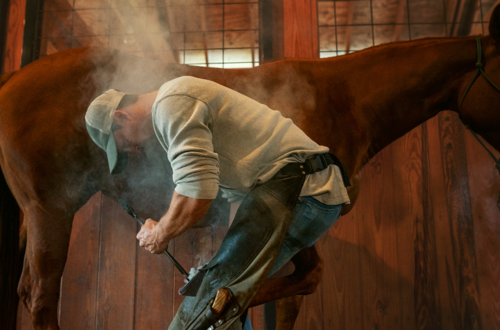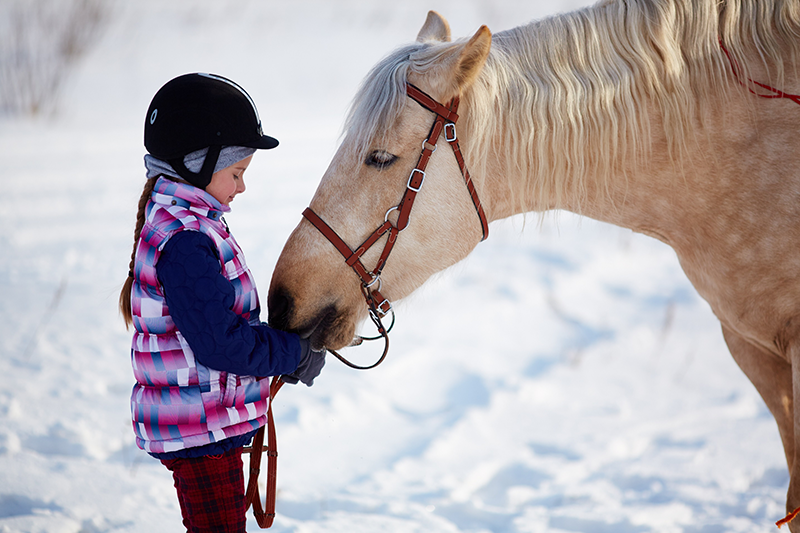
Nutrition for the Working Senior Horse
Article and Images Provided by Triple Crown Nutrition, the Official Feed Sponsor of USPC
It’s no surprise that our horses are living longer and staying more active than ever before. The combination of progressive veterinary care, parasite control, improved dental management, and nutritionally advanced feeds have made it possible for many horses to live well into their 30s. For a lot of horse owners, trainers, and instructors, this also means continuing to compete, ride, and keep trusted partners and much-loved schoolmasters in work. In addition to scheduling regular veterinary examinations that include dental and eye exams, monitoring your horse’s body condition can help you discover early signs of weight loss, metabolic syndrome, and Cushing’s disease and let you know when it might be time to consider a change in your horse’s diet. Proper nutrition for the senior working horse can help keep him performing at his best and keep him healthy for years to come.
A Baseline
Ideally before you have a concern, evaluate your horse. Take a picture from the side, front, and back and then note your observations—too fat, too thin, just right. Learn how to establish a body condition score (BCS) and use a weight tape to get an idea of what your horse weighs. Also, document how he is moving (his gait), his temperament, and how much work he is doing. Many people find it is easiest to do this with each farrier visit so they can catch things early and have a baseline to compare to.
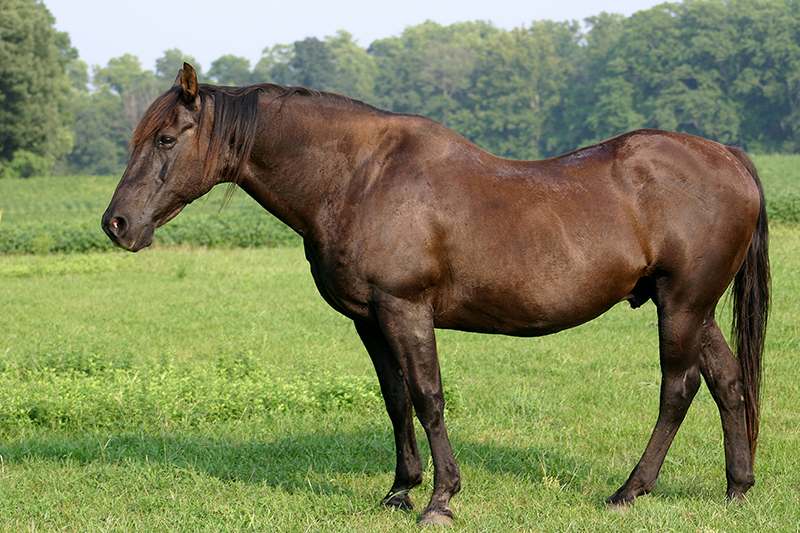
temperament, and how much work he is doing. Autumn’s Memories/Shutterstock
Senior Working Horse Nutrition Basics
For any horse, it’s forage first. For your older horse especially, stay aware of how he is chewing his hay. Is he quidding (leaving small balls of chewed-up hay on the ground)? Is there a lot of waste, indicating the hay may be harder for him to eat or that it is no longer palatable? The goal is for him to consume a minimum of 1.5–2% of his body weight in forage daily. Remember, it’s not the amount of hay you are feeding him, it’s the amount of hay he actually consumes. Once that starts to decline, generally due to natural age-related issues with dentition, you need to find a way to replace those calories and nutrients. Luckily, there are quite a few options to make up this shortfall. Good-quality complete feeds—in addition to chopped forages, hay cubes, hay extender pellets, and shredded beet pulp—can help fill the gap.
Generally, using a couple of these options can help get your desired result. Older horses can sometimes become pickier eaters, and it’s nice to have a couple of options on hand!
The Right Feed
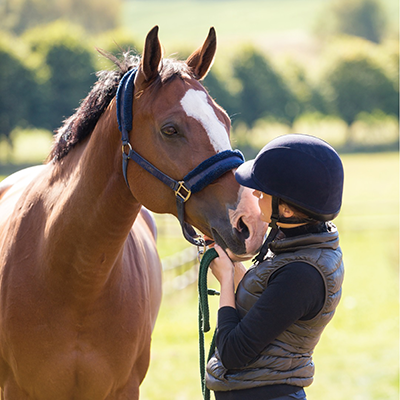
For the aging horse who is still working, attention to detail when choosing his feed can really make a difference. It is vital to choose a feed that provides adequate calories and is formulated to your horse’s vitamin and mineral requirements. So even if the feed is a “senior feed,” it may not be the best choice for your senior horse. Most senior feeds provide more calories per pound with the assumption that the horse is a harder keeper; however, many older horses struggle with being overweight, and more calories are not helpful. This is how a lot of horses get shortchanged on vitamins, minerals, and amino acids. They are put on a high-fat senior feed, but are only fed a small amount because they are an easier keeper. In that situation, a quality ration balancer is the better choice to meet their needs.
Steps You Can Take Today
To make sure your trusted equine partner ages well and continues to happily show up for work, we offer the following tips:
- If you haven’t already, get on a regular schedule with your veterinarian and farrier.
- Stay on top of dental care and parasite control.
- Establish a body condition baseline for your horse with pictures, body condition score, and weight, and check it regularly.
- Set aside a few minutes to watch your horse eat, especially his hay.
- Keep track of what and how much your horse is eating today that keeps him in ideal condition. Be sure to weigh your hay and feed and note any supplements and medications.
- Read your feed tag. Are you feeding the recommended amount per day to meet requirements? If not, contact the feed company to identify what feed would be a better choice for your horse.
If you have any questions or would like help evaluating your horse’s diet, contact Triple Crown at 800-451-9916 or info@triplecrownfeed.com.
This article on Feeding the Senior Horse was originally published in the Winter 2023/2024 issue of Discover USPC magazine. Read more content from that issue.

About Triple Crown Nutrition — Official USPC Feed Sponsor
Triple Crown offers premium equine feeds that provide the exact nutrition your horse needs, designed to help support immunity and gut health. Learn more at TripleCrownFeed.com.



